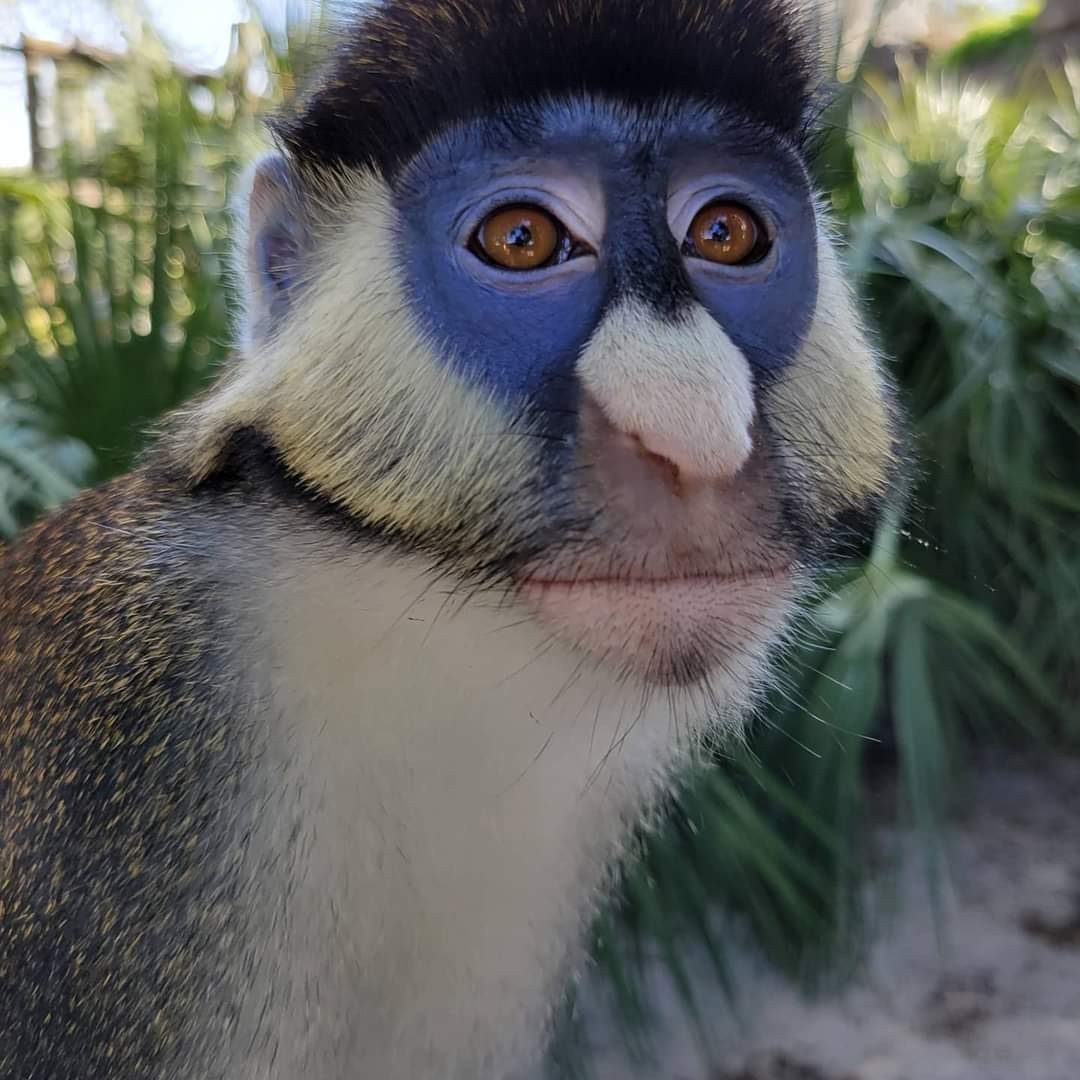– Introduction to Nafis, a male Schmidts red-tailed guenon at the zoo.
– Unique physical features and adaptations of the red-tailed guenon.
– Behavior and social structure of Schmidts red-tailed guenons in the wild and captivity.
– Conservation status and efforts for the species.
– Role of zoos in educating the public and aiding conservation.
Nafis is indeed a striking creature. As a male Schmidts red-tailed guenon, also known as the red-tailed monkey, he graces his environment with an undeniable sense of presence and beauty. A resident of our zoo, Nafis exemplifies the allure and complexity of his species. He commands attention through his looks, the subtle grace in his movements, and the curious intelligence that flickers in his expressive eyes.
At first glance, one cannot help but notice Nafis’s distinct long, bi-colored tail – a signature feature of red-tailed guenons. The tail can be as lengthy as 35 inches, a striking adaptation that considerably exceeds his body length. This appendage is not only visually impressive but serves a crucial purpose. In the dense forests of central Africa, Nafis’s tail helps him maintain balance as he navigates the treetops with agility and precision. The tail’s red coloration also has a purpose: Communication. Certain movements of the tail can convey messages to other members of his species, such as warnings or mating signals.
Aside from his magnificent tail, Nafis displays various other features indicative of Schmidt’s red-tailed guenons. His face is framed by patches of white fur, giving him a distinctive appearance. The soft fur covering his body exhibits a gray-to-olive hue, designed to offer excellent camouflage among the trees. This fur is thicker than one might expect, providing necessary insulation in his native habitats, ranging from lowland tropical forests to mountainous areas.
Nafis is an arboreal primate who spends most of his life in the safety of tree canopies. He relies on his acute vision for day-to-day activities like foraging, as red-tailed guenons mainly consume fruits supplemented by leaves, flowers, and insects. His agile hands and fingers are adept at grasping and manipulating food, reflecting an evolutionary perfection for a life lived above the ground.
At the zoo, Nafis’s diet is carefully managed to mimic his natural dietary preferences as closely as possible. Nutritionists craft his meals to ensure a balanced intake of vitamins, minerals, and caloric content to maintain his health and vigor. Foraging activities are encouraged among these creatures, even in captivity, to keep their minds stimulated and bodies active.
His species demonstrates complex social behavior in the wild, living in groups with a strict hierarchy. The groups consist of a dominant male, like Nafis, multiple females, and their offspring. These guenons communicate through various vocalizations, body postures, and facial expressions, utilizing a complex system as nuanced as any human language.
At the zoo, animal caretakers observe Nafis’s social interactions closely to gather data on guenon behavior, which benefits both zoo management and broader scientific research. These observations help zoo staff fine-tune social environments for Nafis and his peers, ensuring their psychological well-being.
Schmidt red-tailed guenon populations are currently declining due to habitat loss and hunting. The International Union for Conservation of Nature (IUCN) lists some subspecies of red-tailed guenons as near threatened. This highlights the need for a concerted global effort to protect these primates and their habitats.
Zoos play a pivotal role in such conservation efforts, serving as arks for endangered species and centers of education and research. Species like Nafis are part of Species Survival Plans, which aim to maintain genetically diverse and demographically stable populations in captivity. These programs also support field conservation projects and promote habitat preservation, anti-poaching initiatives, and sustainable community development projects.
Nafis serves a role much larger than his life within the zoo. As an ambassador for his wild counterparts, he helps educate the public about the wonders of biodiversity and the importance of conservation. Zoo visitors learn about the intricate lives of red-tailed guenons and their struggles in their natural habitats, fostering a sense of connection and responsibility toward these animals.
The role of education extends to younger generations, who will grow to shape the future of our planet. Hands-on learning experiences, keeper talks, and interactive exhibits—often inspired by guenons like Nafis—inspire a love for nature and a passion for its protection. In teaching about biodiversity, ecosystem roles, and the impacts of human activity, zoos build a foundation of knowledge that empowers people to take action.
Conservation is not a simple task; it demands understanding complex ecological systems, international collaboration, and long-term commitment. Nafis’s presence at the zoo contributes to our understanding of his species by offering a living case study from which to learn and protect. As zoological practices continue to advance, we strive to simulate natural environments to higher degrees, providing species like the Schmidts red-tailed guenon with spaces where they can thrive, even in captivity.
True to his name, Nafis—meaning ‘precious’ or ‘exquisite’ in Swahili—is truly a treasure within the zoo, both for his aesthetics and his important roles in education, conservation, and scientific discovery. Every guest who visits and marvels at Nafis contributes to the ongoing story of these fascinating creatures and the collective efforts to sustain their populations for generations to come. Our conservation work at the zoo, enhanced by the charisma of animals like Nafis, invites individuals from all walks of life to join us in celebrating and preserving the rich tapestry of life on Earth.
*****
Source Description
So handsome! Nafis, our male Schmidts red-tailed guenon or red-tailed guenon. 🐒
🤔DYK? The bi-colored red tail can be as long as 35 inches to help it balance.


